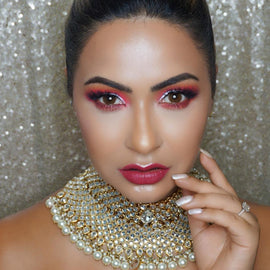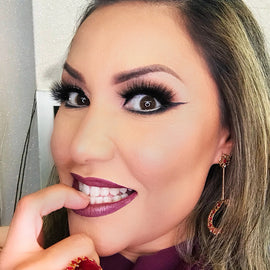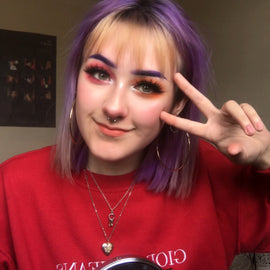
The Facts You Should Know about Colored Contacts (1)
- News
- 13 Jul, 2018
Do you know what is the material of color contacts? Do you know the difference of hard lens and soft lens...
Today, Meitongs.hk, the largest online cheap colored contacts store, will tell you something basics of colored contacts.
Colored Contacts Spectrum in 2017

1. Soft Color Contact Lenses
Soft Color Contact Lenses are made from gel-like, water-containing plastics called hydrogels. These color contact lenses are very thin and pliable. You will feel very comfortable when it is on the front surface of the eye. From the early 1970s, hydro-gel lenses as materials of contact lens become much more popular because they are so soft.
The only alternative at the time was hard cheap contact lenses made of PMMA plastic (see below). PMMA lenses typically took weeks to adapt to and many people couldn't wear them successfully.

2. Silicone Hydro-gel Color Contact Lenses
Silicone Hydro-gel Color Contact Lenses are an advanced type of soft contact lenses that are more porous than regular hydrogel lenses. More oxygen reaches the cornea. From 2002, silicone hydrogel color contact lenses are now the most popular lenses in worldwide.

3. Gas Permeable Color Contact Lenses
Gas permeable color contact lenses — also called GP or RGP lenses — are rigid color contact lenses that look and feel like PMMA lenses (see below) but are porous and allow oxygen to pass through them. Because they are permeable to oxygen, GP lenses can be fit closer to the eye than PMMA lenses, making them more comfortable than conventional hard lenses. Since 1978, gas permeable color contact lenses have essentially replaced nonporous PMMA contact lenses.
GP color contacts often provide sharper vision than soft and silicone hydrogel contacts — especially if you have astigmatism. It usually takes some time for your eyes to adjust to gas permeable lenses when you are the first time to wear them.

4. Hybrid Color Contact Lenses
Hybrid color contact lenses are designed to be rivals of soft or silicone hydrogel lenses, combined with the crystal-clear optics of gas permeable lenses. Hybrid lenses have a rigid gas permeable central zone, surrounded by a "skirt" of hydrogel or silicone hydrogel material.
Despite these features, only very few of people in the worldwide wear hybrid contact lenses, perhaps because these color contact lenses are more difficult to fit and are no cheaper to replace than soft and silicone hydrogel lenses.

5. PMMA color contact lenses
PMMA color contact lenses are made from a transparent rigid plastic material called poly-methyl Merthiolate (PMMA), which also is used as a substitute for glass in shatterproof windows and is sold under the trademarks Lucite, Perspex, and Plexiglas.
PMMA lenses do not transmit oxygen to the eye and can be difficult to adapt to. These (now old-fashioned) "hard color contacts" have virtually been replaced by GP lenses and are rarely used today.
























